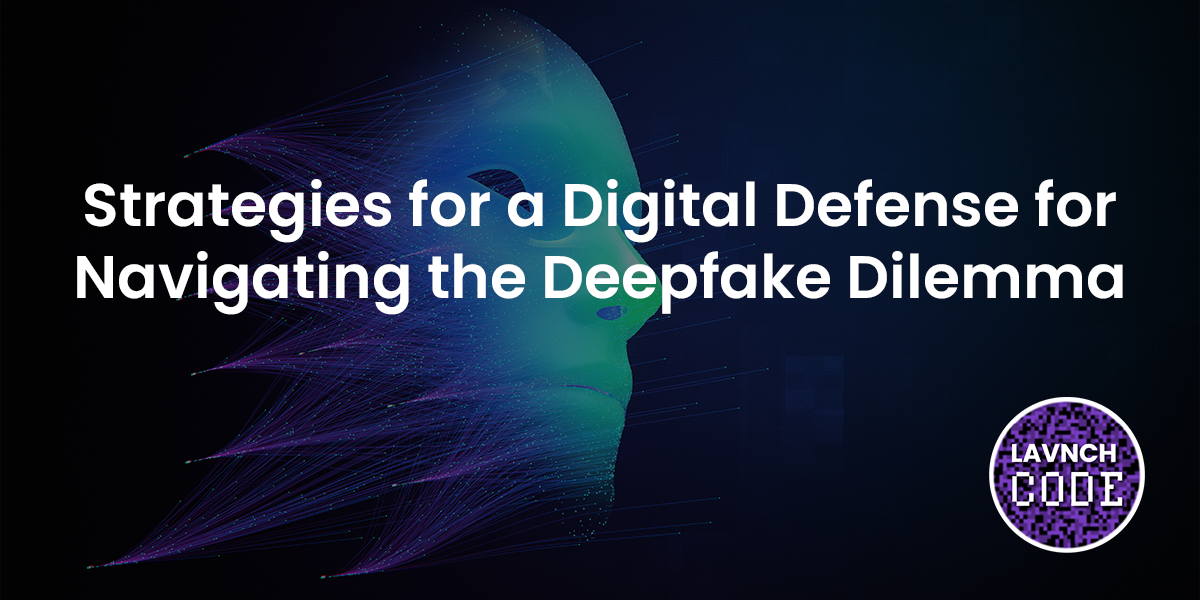
Digital Defense Strategies for Navigating the Deepfake Dilemma

In an era where seeing is no longer believing, the rise of deepfakes—hyper-realistic digital fabrications created using artificial intelligence (AI)—poses a significant challenge to the integrity of digital media. As these AI-generated fakes become increasingly sophisticated, distinguishing truth from deception is becoming more complex. This article explores strategies to combat the deepfake phenomenon, focusing on technological, educational, and regulatory approaches.
Understanding Deepfakes
Deepfakes leverage AI algorithms, particularly deep learning techniques, to superimpose existing images and videos onto source images or videos. This technology, initially a tool for entertainment and research, has quickly evolved into a tool for creating misinformation and manipulation.
Technological Solutions
The first line of defense against deepfakes is technological. AI and machine learning models are being developed to detect deepfakes by analyzing inconsistencies in images or videos, such as irregular blinking patterns, unnatural skin tones, or inconsistent lighting. These detection tools analyze the data at a granular level—something that is often imperceptible to the human eye.
However, as deepfake technology evolves, so must detection methods. This is a classic cat-and-mouse game where each advancement in deepfake generation is met with a countermeasure in detection. The development of more robust AI models that can learn and adapt to new deepfake techniques is crucial.
Educational and Awareness Initiatives
Education plays a pivotal role in combating deepfakes. Media literacy campaigns that educate the public on recognizing deepfakes can be an effective tool. These initiatives should focus on teaching critical thinking skills, enabling individuals to question and verify the authenticity of the media they consume.
Workshops, online courses, and educational modules in schools and universities can help raise awareness about the nature of deepfakes and the potential harm they can cause. This approach empowers individuals to be more discerning consumers of digital content.
Regulatory Frameworks
Regulation is another critical component in the fight against deepfakes. Governments and international bodies need to establish clear legal frameworks that define the creation and distribution of deepfakes. These regulations should balance the prevention of harm caused by malicious deepfakes while protecting freedom of expression and innovation.
Laws that specifically address the non-consensual use of someone’s likeness—especially in deepfakes—are essential. Additionally, regulations could require digital platforms to implement detection tools and take down policy for identified deepfakes.
Industry Collaboration
Collaboration across various sectors is critical. Tech companies, academic institutions, and government agencies need to work together to develop standardized practices for deepfake detection and prevention. Sharing resources, research, and best practices can accelerate the development of effective solutions.
Open-source initiatives, where detection tools and datasets are made publicly available, can also aid in the collective effort against deepfakes. This approach encourages a wider community of researchers and developers to contribute to the solution.
Ethical Considerations
As we develop tools and strategies to combat deepfakes, ethical considerations must be at the forefront. The technology used for detection should not infringe on individual privacy rights. There is also a risk of false positives, where authentic content is mistakenly flagged as a deepfake, which could lead to unwarranted censorship.
The Future of the Deepfake Phenomenon
The deepfake phenomenon presents a multifaceted challenge that requires a comprehensive approach. Combating deepfakes is not just about developing better detection technology—it’s about creating a holistic strategy that includes education, regulation, and ethical considerations.
As we advance into an increasingly digital future, the importance of authenticity in digital media cannot be overstated. By employing a combination of technological innovation, informed public awareness, collaborative efforts, and regulatory measures, we can build a more resilient digital ecosystem where truth and trust prevail.

Shomron Jacob
About the Author: As the head of applied machine learning and platform at Iterate.ai, Shomron Jacob stands at the forefront of driving AI-powered innovation and growth. With a deep expertise in natural language processing, computer vision, large language models (LLM), generative AI, and microservices, he is a pivotal force in shaping the future of intelligent solutions. Jacob’s notable achievements include pioneering the first low-code, no-code version of drag-and-drop AI nodes, and creating scalable LLM pipelines using low-code techniques and microservices. His academic foundation is solidified with a Master’s degree in Computer Science, focusing on AI and Machine Learning, equipping him with both the theoretical knowledge and practical skills to lead in the dynamic field of AI. Beyond his professional pursuits, Jacob is passionate about engaging in conversations with large language models, exploring the endless possibilities they present in enhancing and transforming technological landscapes.








